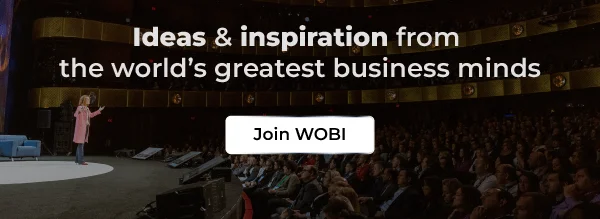
Customer Experience
Executive Summary
Keys to a Successful
CX Strategy
What makes a customer stay loyal to a brand — convenience, emotion, price, something deeper, or a mix of everything? Where do you start to craft a successful customer experience? In her Masterclass on Customer Experience Strategy, Renée Richardson Gosline, a globally recognized expert in CX and AI at MIT Sloan, reveals how to create an irresistible customer journey that keeps consumers coming back, giving examples of winning companies that are leveraging the full power of data, technology, and emotion to win the market. Discover in this article how to unlock these insights and elevate your CX strategy.
About Renée Richardson Gosline
Customer Experience (CX) is a key differentiator in both B2B and B2C contexts. Research shows that customers share their experiences with others – both bad and good -, switch to competitors offering better CX, and are willing to pay more for better experiences. Organizations should therefore approach CX as an interconnected series of touchpoints, where both human and technological interactions influence customer behavior. The success of each touchpoint impacts overall KPIs, making every interaction an opportunity to create exponential value.
The ECSIT Framework
While effective CX relies on data-driven marketing, customers expect control and agency over their data, privacy protection, and value in return for their information. Organizations that enable customers to actively participate in value creation while respecting these expectations are more likely to build customer loyalty. The key question becomes, “How can we ensure customers feel they’re receiving value in this exchange?”
To assess whether a brand is providing value, Richardson presents the ECSIT framework, which identifies five forms of value:
- Economic capital: Compensation or incentive-based empowerment that helps customers make and/or save money.
- Cultural capital: The culture surrounding a brand and the beliefs that customers feel inspired by and connected to. Being part of a brand’s culture allows customers to express their identity; it becomes a way of life.
- Social capital: The connections between people and their status within networks. Fostering C2C connections can provide value far beyond what a product or service alone offers.
- Information capital: Making customers feel in-the-know, enabling them to make better, smarter decisions while being transparent about data handling and respecting their privacy. This fosters value exchange rather than making customers feel they are simply being pumped for data.
- Temporal capital: Valuing clients’ time by providing efficient CX, saving them effort and time, and anticipating needs through information capital.
These five forms of value are mutually reinforcing; the more forms of value a brand provides, the more customers feel agency, the more likely they are to advocate for the company, and the harder it becomes for competitors to replace them.
Spotify: A CX Success Case
Spotify collects extensive data from its customers, going beyond Net Promoter Score (NPS) to identify potential value touchpoints that might be obscured or aggregated out by other KPIs, by understanding not only the What but also the Why. This music streaming platform uses various methodologies to collect quantitative, qualitative, and behavioral data. These data are transformed and leveraged through data visualization to be easily understood and actionable within the organization. Additionally, this data visualization is employed externally to improve the Customer Experience and build the brand’s value. This all culminates in their renowned and pioneering yearly Spotify Wrapped, which leverages the value of data in CX and gamification. Through this initiative, Spotify dominates its category, fosters customer engagement, and ultimately outpaces the competition.
The Impact of AI on CX
Regarding AI in CX and content value, Richardson describes an experiment conducted to examine how content creation, whether human or AI-generated, affects perceived value. The experiment tested four scenarios: human-written content, AI-generated, and two types of human-AI collaboration. The results revealed that content quality perception depends on authorship disclosure: When participants were unaware of the authorship, AI performed convincingly in CX, whether working independently or in collaboration with human professionals. However, when authorship was disclosed, a “human favoritism” tendency emerged, with perceived value increasing when human involvement was known. From a CX perspective, this means that the knowledge of human involvement demonstrably adds value.
Craving more of Renée Richardson’s insights? Dive into the full Masterclass, included in your WOBI Membership — or watch it on demand here and take your CX strategy to the next level!
Renée Richardson Gosline
Customer Experience Strategy
Esperta di fama mondiale in esperienza del cliente e intelligenza artificiale presso MIT Sloan
A globally-recognized thinker on how AI affects human judgment, Renée Richardson Gosline is an award-winning Research Scientist and Senior Lecturer at the MIT Sloan School of Management, and the head of the Human-First AI group at MIT’s Initiative on The Digital Economy. Named a Digital Fellow at Stanford’s Digital Economy Lab, Gosline has also been recognized as one of the World’s Top 40 Professors under 40 by Poets and Quants, and as “one of the brightest minds in AI” by Inc. Magazine in 2024. Her research specializes in AI CX strategy, creating a culture of experimentation, and Responsible AI. She is the author of the forthcoming book, In Praise of Friction.

